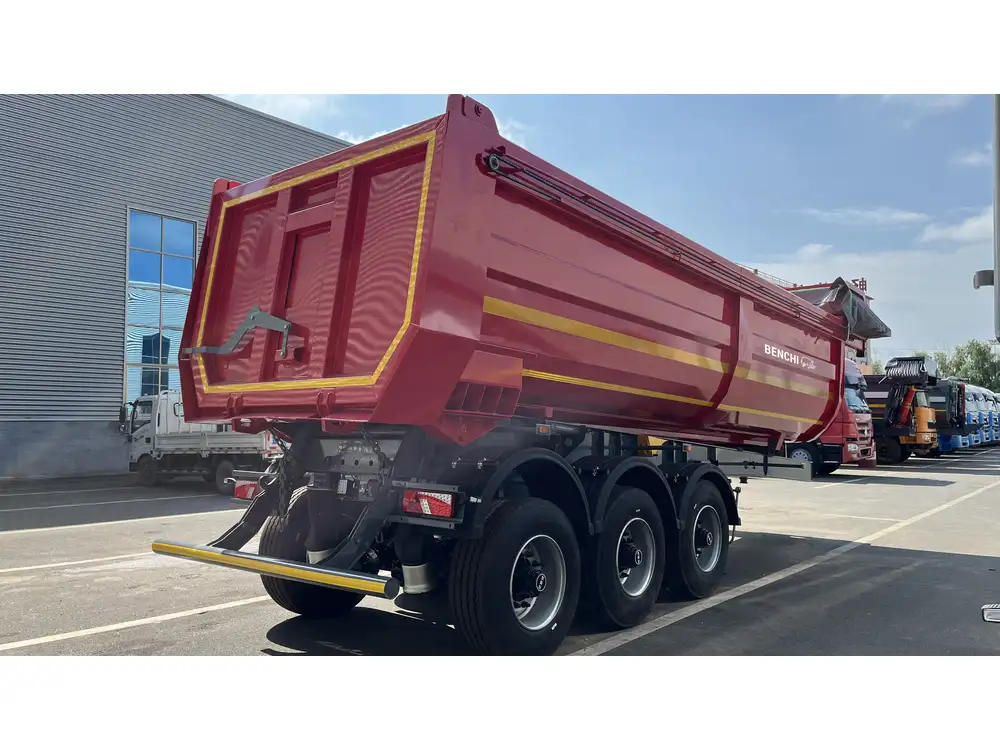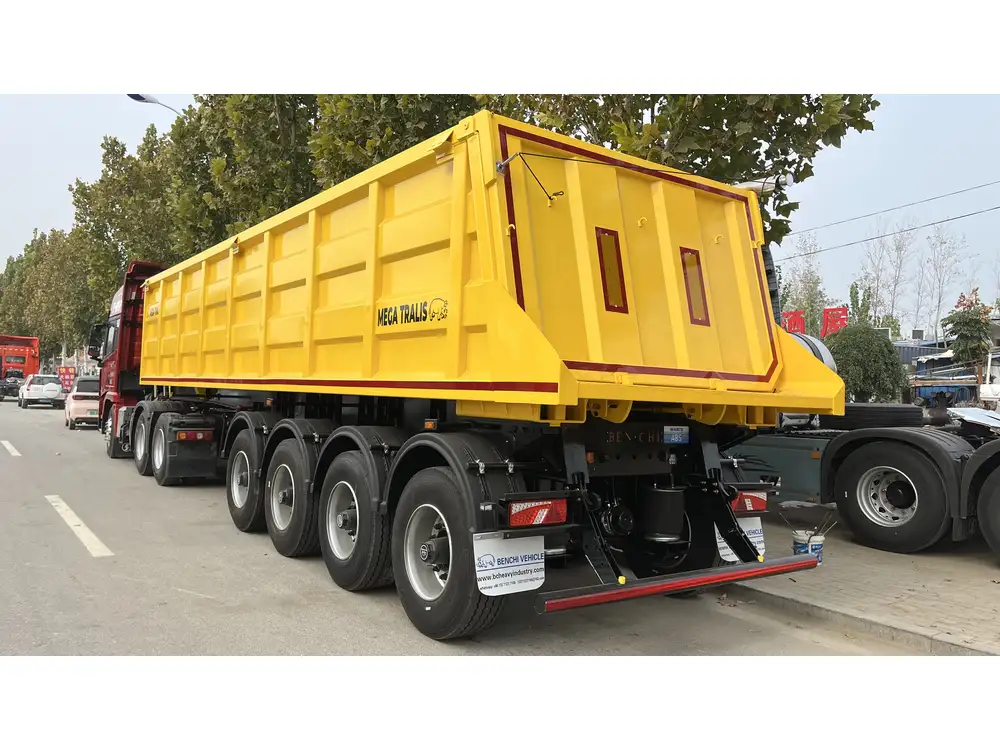When navigating the complex world of livestock transport, the height of a semi cattle trailer can have significant implications for both safety and efficiency. In this comprehensive guide, we delve into the intricacies surrounding the height specifications of semi cattle trailers, exploring their design features, regulations, and the critical factors that influence their dimensions.
Understanding the Standard Heights of Semi Cattle Trailers
When it comes to the transportation of livestock, specifically cattle, understanding the average height of semi cattle trailers is paramount. Generally, the height of these trailers ranges between 6.5 to 7.5 feet (approximately 2 to 2.3 meters). However, various models, depending on their design and intended use, can exceed these measurements, leading to a variety of dimensions. Here’s a quick breakdown of typical semi cattle trailer heights:
| Trailer Type | Average Height (Feet) | Average Height (Meters) |
|---|---|---|
| Standard Semi Cattle | 6.5 – 7.5 | 2.0 – 2.3 |
| Extended Semi Cattle | 7.5 – 8.5 | 2.3 – 2.6 |
| Low Profile Semi Cattle | 6.0 – 7.0 | 1.8 – 2.1 |
Key Factors Influencing Height
Type of Cattle Transported: Different breeds of cattle vary in height. Adjusting the trailer height ensures that there’s enough headroom for taller breeds while also prioritizing safety during transportation.
Regulatory Standards: Local, state, and federal regulations often dictate the maximum and minimum heights allowable for commercial vehicles, including trailers designated for livestock. Understanding these regulations can help prevent issues during inspections.
Design Variances: Whether the trailer is built for short-haul or long-haul journeys can affect its height. Long-haul trailers may prioritize aerodynamics, resulting in a design that may be slightly lower to reduce drag.

Major Considerations When Choosing a Cattle Trailer
Selecting the appropriate semi cattle trailer extends beyond just height considerations. A myriad of factors plays a pivotal role in making the best selection based on user needs:
Livestock Health and Welfare
- Ventilation: The height must allow for proper airflow within the trailer, ensuring that cattle remain comfortable during the journey.
- Space Requirements: Each animal requires a specific amount of space. A taller trailer might allow for a more spacious interior, enhancing comfort and reducing stress among transported cattle.
Trailer Loading and Unloading
- Loading Ramps: The height of the trailer affects the design of loading ramps, which must be compatible to facilitate smooth and safe entry and exit for the animals.

Trailers and Vehicle Compatibility
- Compatibility with Trucks: Potential buyers must also consider the overall height of the trailer in relation to their existing trucks or hauling vehicles. Mismatched heights can lead to logistical issues or be non-compliant with transport regulations.
Weight Distribution
- Stability: Height can influence stability. A more elevated center of gravity may result in a greater risk of tipping, especially when turning or driving on uneven terrain.
Exploring Cattle Trailer Design: Height and Beyond
The design of a semi cattle trailer is not solely about height. A well-engineered trailer must encompass several features that ensure functionality and safety.

Materials
- Construction: The construction materials can influence both the height and overall weight of the trailer. Aluminum and steel are commonly used due to their strength and durability.
Add-On Features
- Adjustable Roofs: Some trailers come with adjustable roofs, allowing for flexibility depending on the load and physical characteristics of the cattle being transported.
- Safety Equipment: Features such as non-slip surfaces and secure latching mechanisms for doors should be primary considerations.
Manufacturer Specifications
To maintain industry standards and ensure safety, it’s crucial to refer to the manufacturer’s specifications when examining potential trailer purchases. This information can provide essential insights into the performance and upkeep required for each model.

Regulations and Compliance: The Importance of Knowing the Law
Understanding the regulations governing the height and overall design of semi cattle trailers is not merely an administrative task; it is an essential part of responsible transportation practices. Breaching these regulations can lead to heavy fines, litigation, and increased liability.
Federal Regulations
The Federal Motor Carrier Safety Administration (FMCSA) sets guidelines on the safe operation of commercial vehicles, which includes semi trailers. Key elements to consider include:
- Maximum Height Restrictions: Adhering to height limits on roadways to prevent collisions with overpasses and other infrastructure.
- Load Securement: Regulations on how livestock must be secured inside the trailer based on height and weight.
State Regulations
Different states may enforce varying laws that affect the operation of livestock transport. It is crucial to understand the specific conditions that apply in each state where cattle will be transported to avoid potential issues.

Practical Tips for Cattle Trailer Owners
Regular Inspections: Conducting periodic inspections of trailer height and structure, ensuring compliance with local regulations.
Educating Drivers: Providing training to drivers on the specific needs of transporting cattle, including understanding height-related issues that may arise.
Keeping Up with Changes: Remaining informed about changes to trucking regulations and industry standards that may affect trailer design concepts.
Conclusion: Height Matters in Cattle Transportation
The height of a semi cattle trailer is more than just a mere number—it influences nearly every aspect of livestock transportation, from ensuring animal welfare to complying with transportation regulations. By understanding the specifications, design choices, and legal implications surrounding trailer heights, manufacturers and transporters alike can make educated decisions that optimize both safety and efficiency.
When considering the purchase or modification of a semi cattle trailer, it is essential to factor in all elements discussed in this article. Whether it is adhering to state regulations, ensuring animal comfort, or carefully designing for effective loading and unloading, every detail matters. Engage with trusted manufacturers who can provide tailored solutions aligned with your transportation goals. Remember, in the world of livestock transportation, every inch counts—literally and figuratively—with the height of a semi cattle trailer being central to a successful operation.



